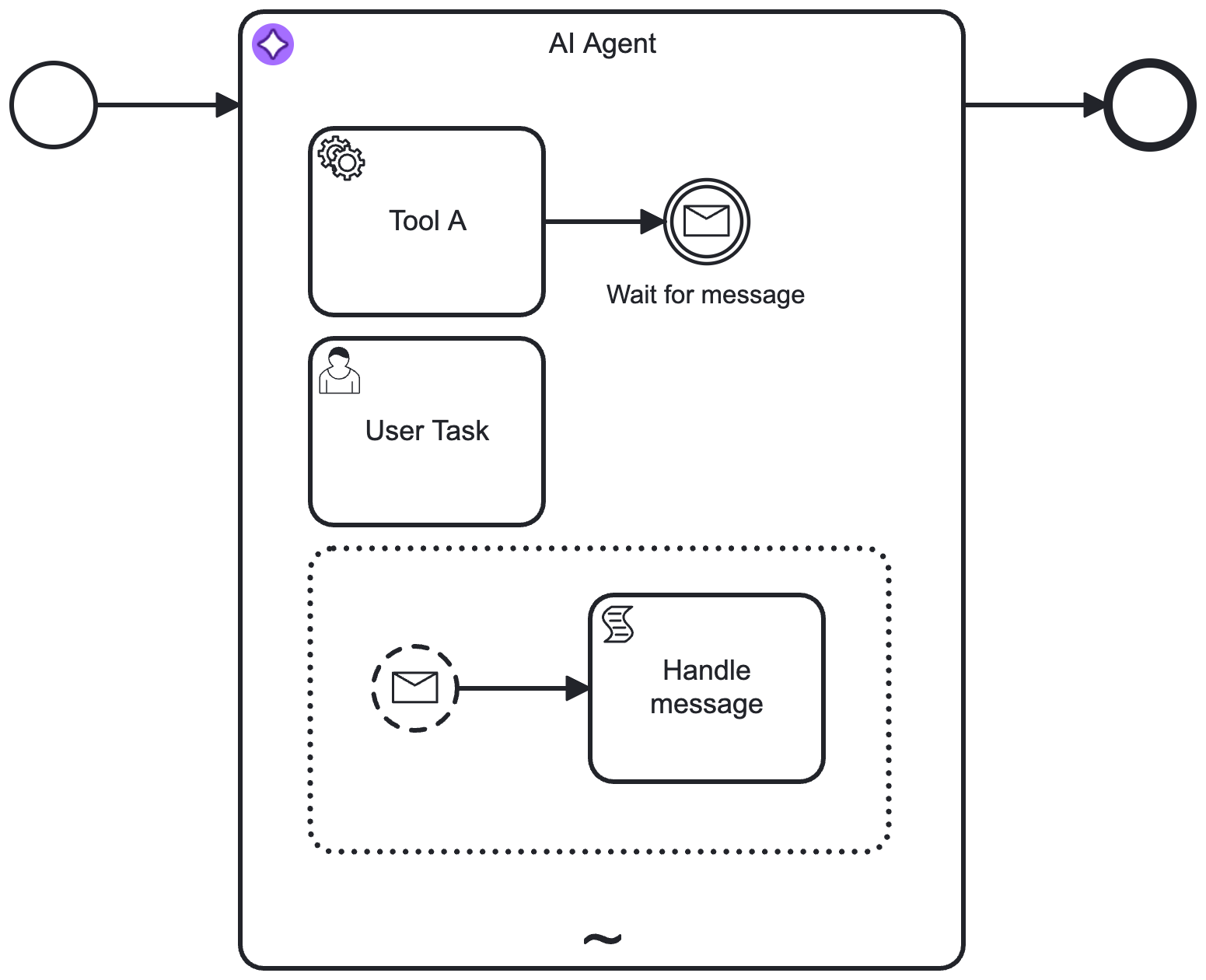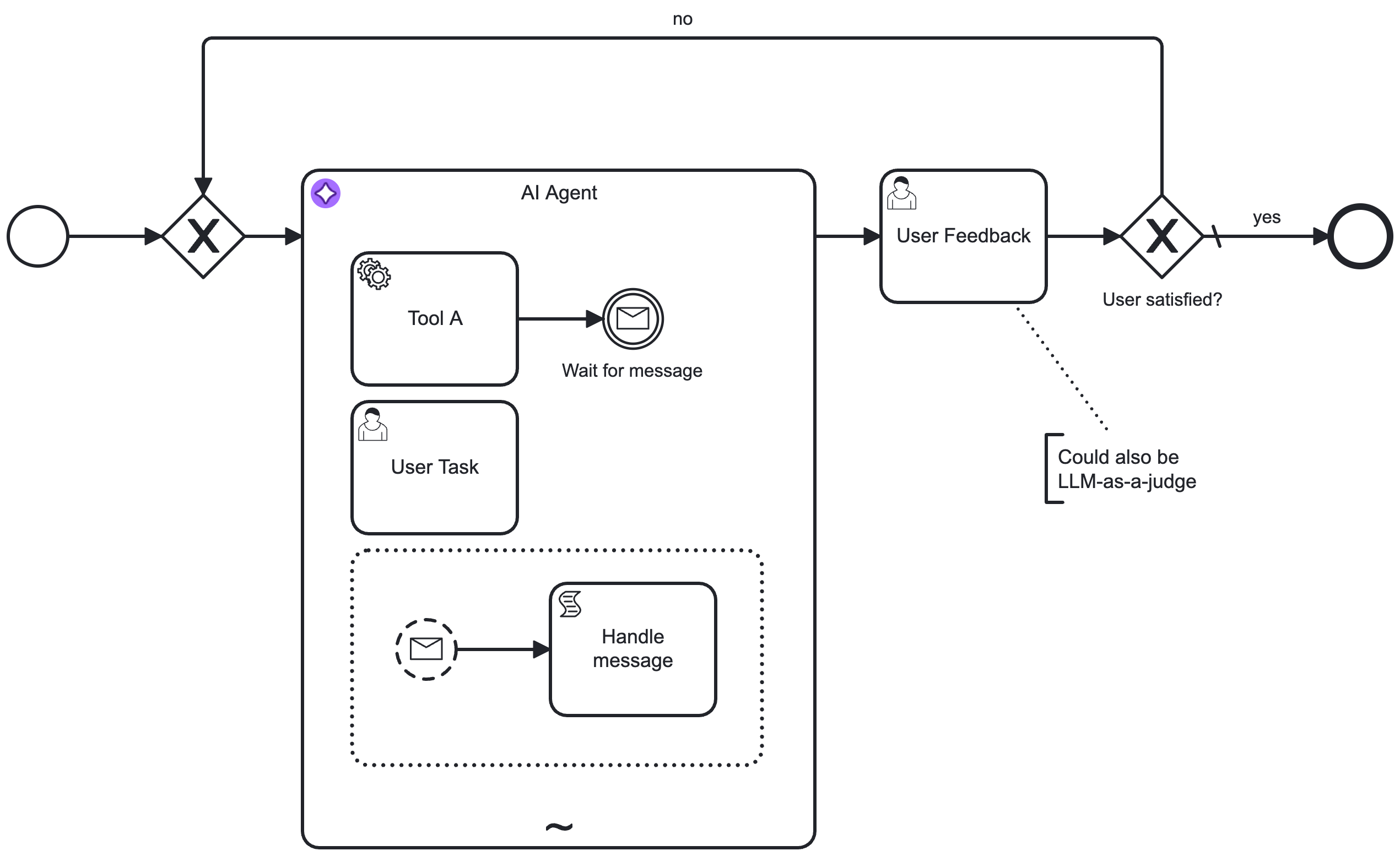Example AI Agent Process connector integration
This worked example demonstrates how to use the AI Agent Process connector applied to an ad-hoc sub-process to model AI Agent tools and response interaction feedback loops.
Create an AI Agent element
As the AI Agent Process implementation implicitly creates a tools feedback loop, you only need to add an ad-hoc sub-process with an applied AI Agent connector template to the process.
For more information on how to model the tools available to the AI agent, see tool definitions.

After adding the element, open the properties panel to configure the connection to your model provider, and modify the system and user prompts as required.
Example response interaction feedback loop
Similar to the tools feedback loop, another feedback loop acting on the agent response can be added by re-entering the AI Agent connector with new information. You must model your user prompt so that it adds the follow-up data instead of the initial request.
For example, your User Prompt field could contain the following FEEL expression to make sure it acts upon follow-up input:
=if (is defined(followUpInput)) then followUpInput else initialUserInput
With the AI Agent Process implementation, the user feedback needs to be modeled to loop back to the AI Agent ad-hoc sub-process:

How you model this type of feedback loop greatly depends on your specific use case.
- The example feedback loop expects a simple feedback action based on a user task, but this could also interact with other process flows or another agent process.
- Instead of the user task, you could also use another LLM connector to verify the response of the AI Agent. For an example of this pattern, see the fraud detection example.
Additional resources
- The connectors repository contains a set of ready-made examples using the AI Agent Process connector.